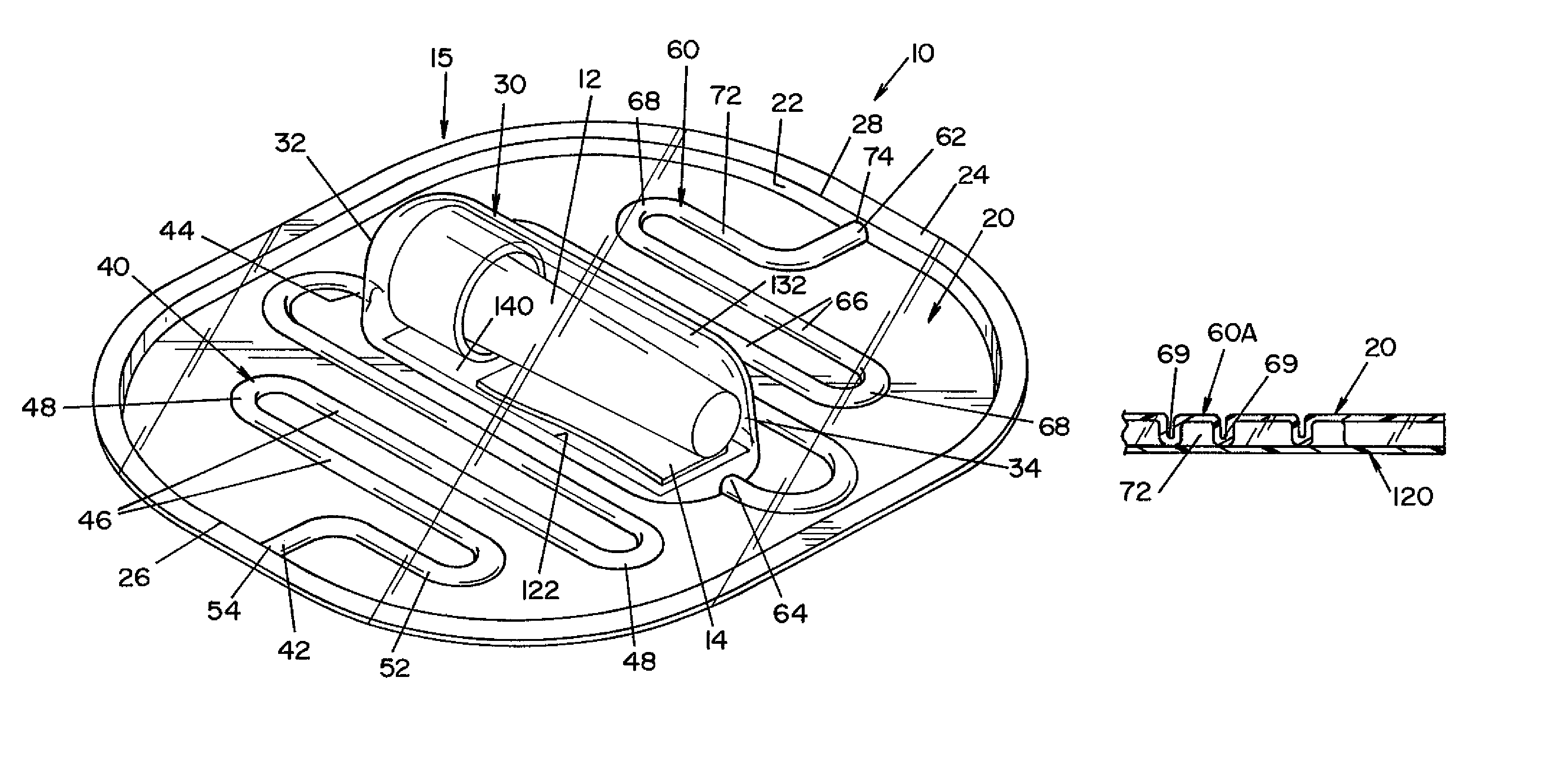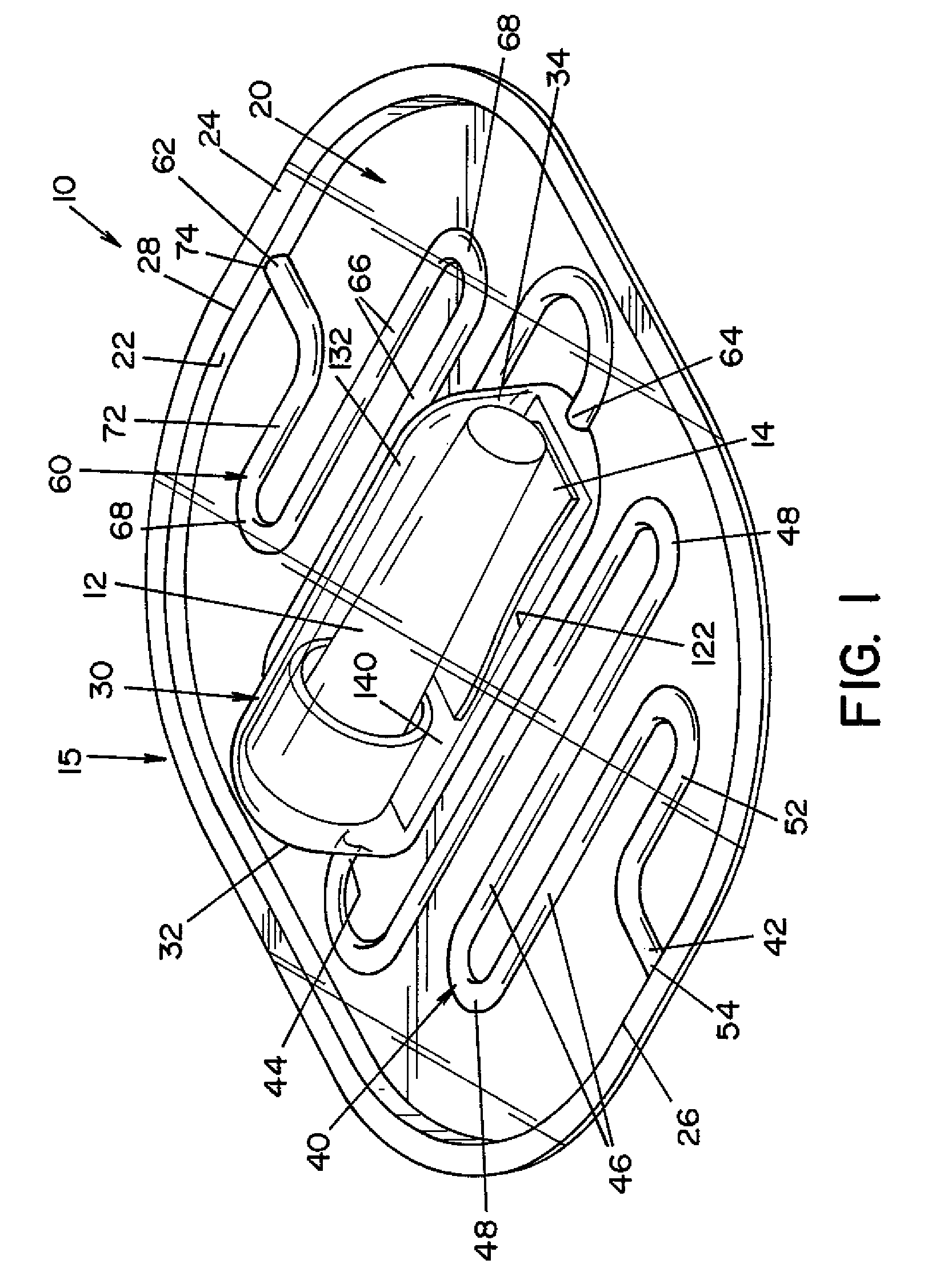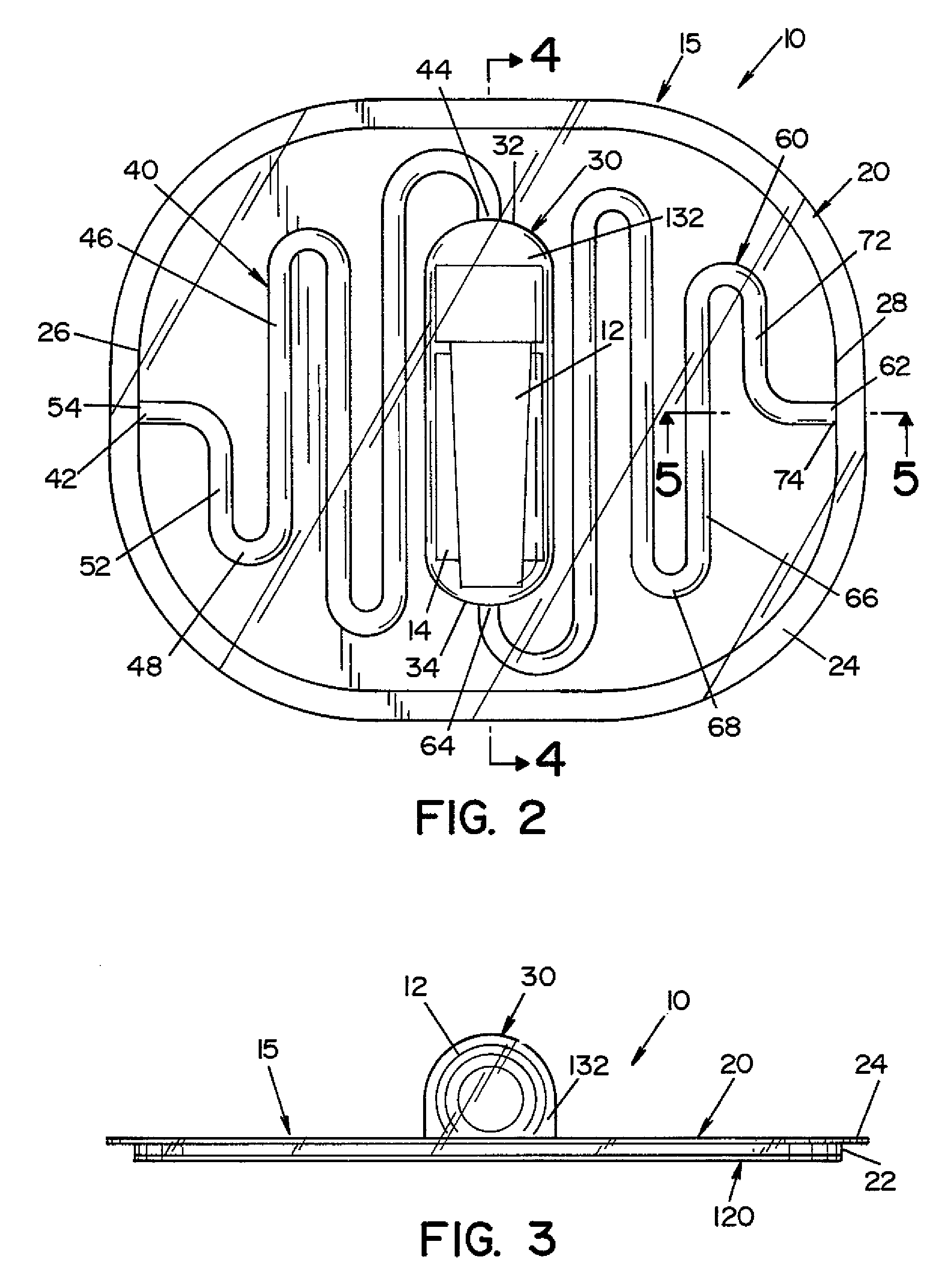Process challenge device for assessing the effective performance of a biocontamination deactivation process
a biocontamination deactivation and process technology, applied in the field of monitoring a biocontamination deactivation process, can solve the problems of difficult to expose the inner surface of the lumen the microbial deactivation process may not be effective, and the surface of medical instruments is difficult to expose to so as to improve the circulation of the vaporous deactivating agent and the effect of reducing the condensation of a
- Summary
- Abstract
- Description
- Claims
- Application Information
AI Technical Summary
Benefits of technology
Problems solved by technology
Method used
Image
Examples
Embodiment Construction
[0028]Referring now to the drawings wherein the showings are for the purpose of illustrating one embodiment of the invention only and not for the purpose of limiting same, FIGS. 1-3 show a process challenge device (PCD) 10 according to one embodiment of the present invention. PCD 10 includes a housing 15 and an indicator device, such as a biological indicator (BI) 12 and / or a chemical indicator (CI) 14. Housing 15 is generally comprised of a first layer 20 and a second layer 120, as best seen in FIGS. 3 and 6.
[0029]First layer 20 is a generally planar sheet having a first end 26 and a second end 28. In the illustrated embodiment, a side wall 22 extends from the peripheral edge of first layer 20, and a flange 24 extends outward from side wall 22. Side wall 22 and flange 24 provide additional structural rigidity to first layer 20.
[0030]A recess 30, a first channel 40 and a second channel 60 are formed in first layer 20. Recess 30 has a first end 32 and a second end 34. In the illustra...
PUM
| Property | Measurement | Unit |
|---|---|---|
| length | aaaaa | aaaaa |
| diameter | aaaaa | aaaaa |
| length | aaaaa | aaaaa |
Abstract
Description
Claims
Application Information
 Login to View More
Login to View More - R&D
- Intellectual Property
- Life Sciences
- Materials
- Tech Scout
- Unparalleled Data Quality
- Higher Quality Content
- 60% Fewer Hallucinations
Browse by: Latest US Patents, China's latest patents, Technical Efficacy Thesaurus, Application Domain, Technology Topic, Popular Technical Reports.
© 2025 PatSnap. All rights reserved.Legal|Privacy policy|Modern Slavery Act Transparency Statement|Sitemap|About US| Contact US: help@patsnap.com



